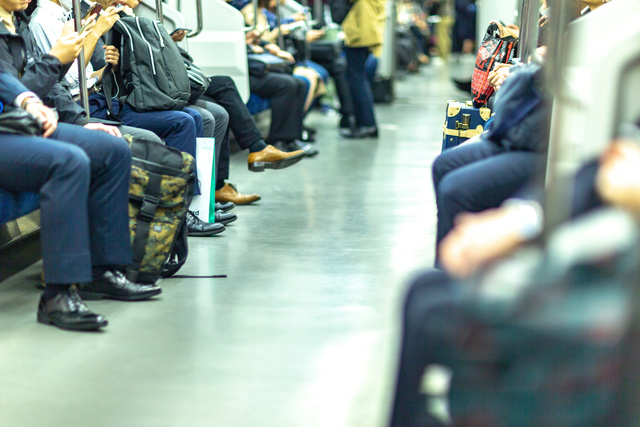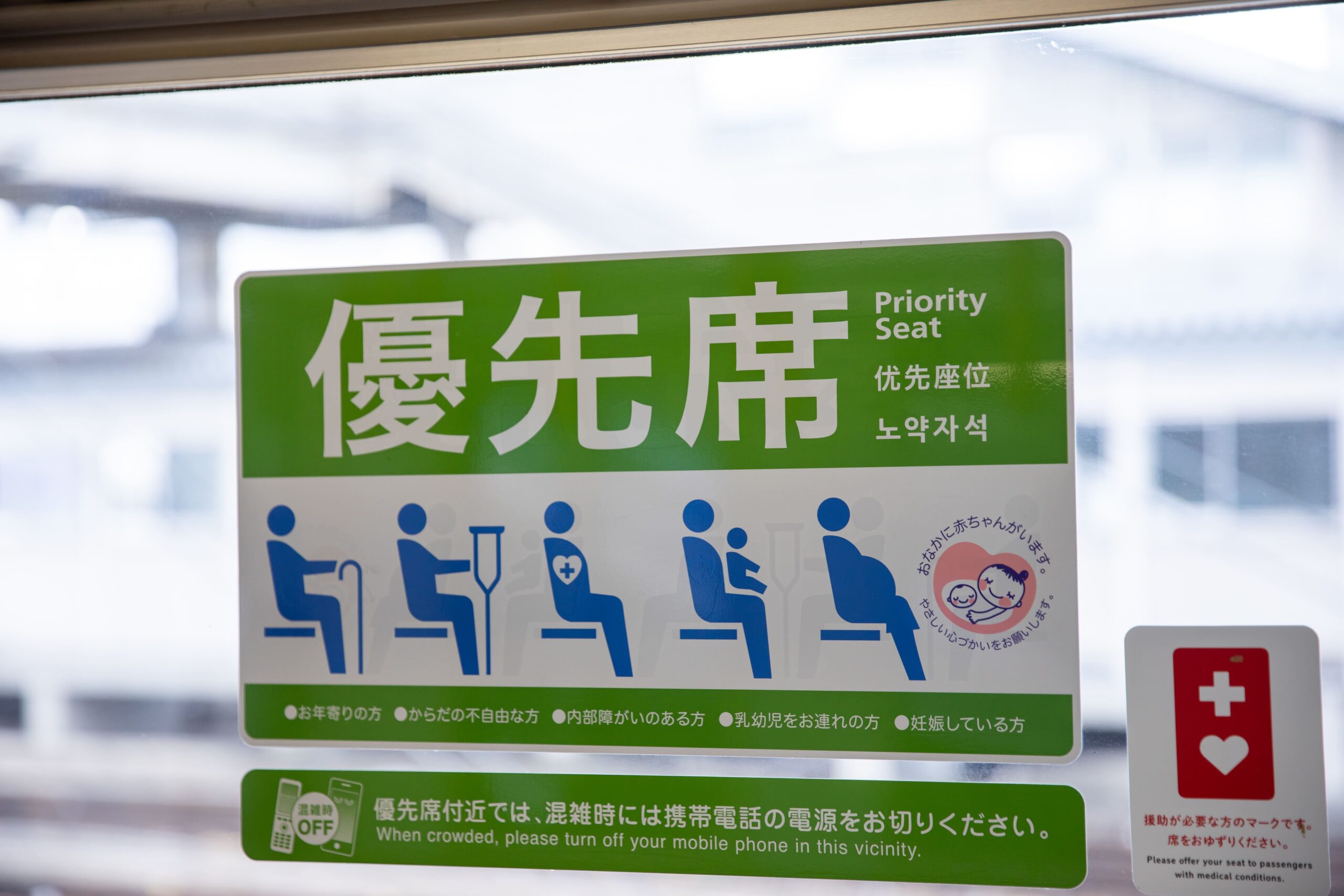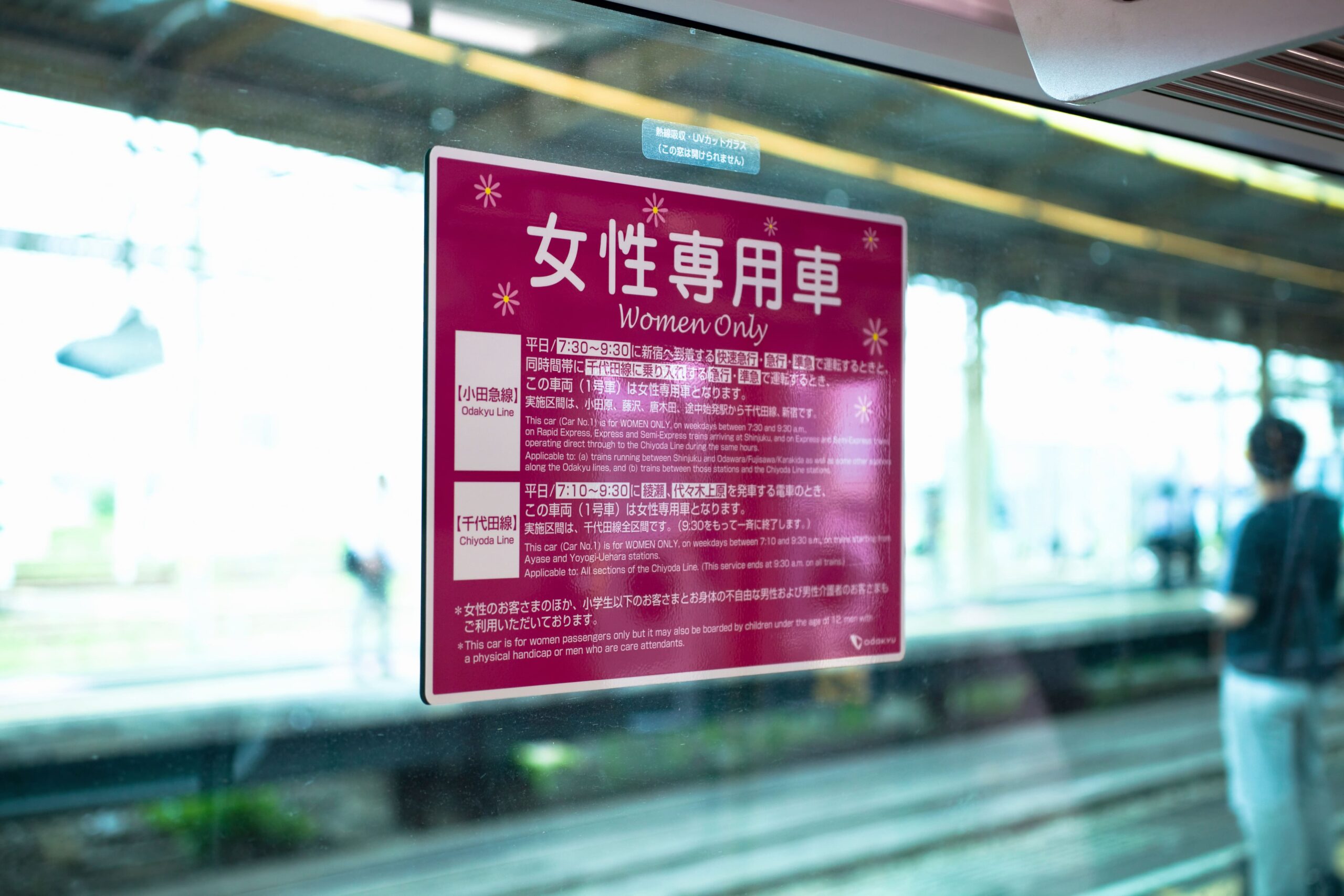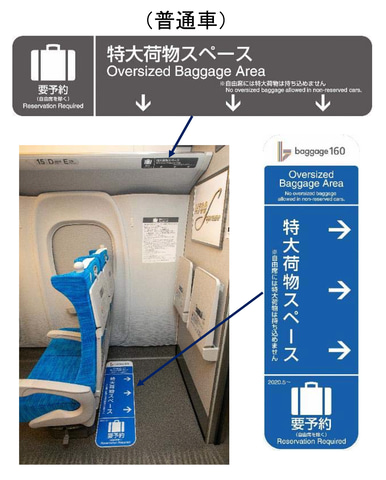Travel with Confidence! A Beginner’s Guide to Japanese Train Etiquette

Japanese trains are famously punctual and super convenient—but if you’re not familiar with the unspoken rules and manners, you might accidentally cause trouble for those around you.
In this article, we’ll walk you through the essential train etiquette to help you ride comfortably and confidently during your stay in Japan.
Knowing things like priority seating and women-only cars can make your journey even smoother!
Understanding Priority Seating in Japan

Most trains in Japan have priority seats—these are specially designated spots for seniors, pregnant women, people with disabilities, or those traveling with small children.
You’ll find similar seating on other public transport too, like buses and monorails, often marked with wheelchair or stroller icons. Keep an eye out for the signs!
-
Look for the Signs! : Priority seats are usually marked in blue or orange, and they’re easy to spot—they’ll even say “Priority Seat” in English.
-
Can I Sit There? : If the train isn’t crowded, it’s totally okay to sit in a priority seat. Just be ready to offer it up quickly and politely if someone in need comes by—that’s the considerate thing to do!
-
Who Should You Offer It To? : Think seniors, pregnant women, someone holding a baby, people with a cast or injury, or anyone using a wheelchair—basically, anyone who looks like they could use a bit of extra care.

Helpful Symbols to Know: Help Mark & Maternity Mark | Tokyo Tips
Even if someone doesn’t look like they need help, keep an eye out for signs like the Help Mark or Maternity Mark. If you notice these—or if someone simply looks unwell—it’s kind to offer them your seat.
-
Go Easy on the Phone : Some trains have signs asking you to switch off your phone near certain seats—especially during the busy morning and evening rush hours. It’s best to be mindful and keep usage to a minimum during crowded times.
What’s a Women-Only Car?

During the morning rush hour, you might come across women-only cars—these are special train cars reserved for women as a measure to prevent sexual harassment.
-
Where Can You Find Them? : Look for pink signs on the platform or the train itself—that’s your clue! These cars usually run between 7 and 9 a.m. on weekdays.
-
Who Can Ride It? : They’re mainly for women, but small boys and men assisting someone with a disability are generally allowed, too.
-
Heads Up for Men! : If you accidentally step into a women-only car, don’t worry—you won’t get in trouble. But to avoid awkward situations, it’s best to steer clear if you can.
Other Train Etiquette to Keep in Mind
-
Space for Wheelchairs and Strollers : Some trains have designated areas where wheelchairs and strollers can be safely parked—making travel more comfortable for everyone.

These spaces are usually marked with clear signs or located near the train doors where there’s extra room. If you see one, feel free to use it appropriately—and if someone else needs it more, offering the space is a thoughtful gesture.
-
Keep It Quiet : In Japan, trains are considered quiet spaces. Talking on the phone is a no-go, and loud conversations are best avoided.
-
Mind Your Luggage : If you’re carrying a large suitcase, place it by your feet or in the designated luggage area if available. Try not to block walkways or take up extra space.
-
Line Up, Don’t Cut In : It’s customary to wait in line when boarding trains in Japan. Cutting in can lead to confusion—or even conflict—so always queue up politely.
Riding the Shinkansen? Don’t Forget to Reserve Space for Big Bags
If you’re traveling or heading home with a large suitcase, take note!
For bags measuring between 160cm and 250cm in total (height + width + depth), you’ll need to reserve a seat that comes with an oversized luggage space in advance.

These special seats are located at the very back of the car, with a dedicated space behind the seat for your luggage.
Even if the area looks empty, you can’t use it without a reservation—someone else may have already booked it! If you don’t have a reservation, place your suitcase at your feet or store it on the overhead rack where it won’t get in the way.
One Last Tip
Riding trains in Japan goes a lot smoother with just a little mindfulness.
If you’re curious to learn more about everyday manners in Japan, check out our other articles like “Did You Know? The Etiquette of Using Escalators in Japan” and “Planning a Trip to Japan? Here’s How to Spot the Difference Between Shrines and Temples” You might discover something new about Japanese culture!
A little courtesy goes a long way—enjoy your adventure in Japan!